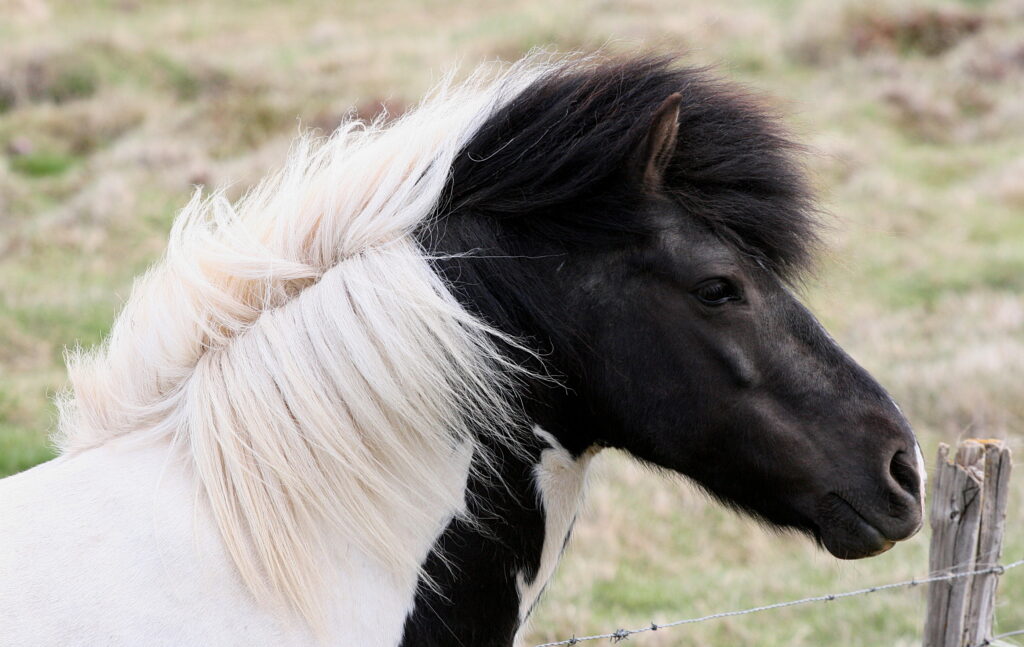The Icelandic horse, a small but mighty breed native to Iceland, is renowned worldwide for something truly special – its distinctive gaits. While most horse breeds move in three or four ways, Icelandic horses naturally perform up to five different gaits, including two that are exceedingly rare among equines. These extraordinary movement patterns have evolved over a millennium of isolation and selective breeding, creating a horse that moves unlike any other in the world. The story behind these unique gaits involves geology, genetics, history, and culture – a fascinating tale of how environment and human preference shaped one of the world’s most distinctive horse breeds.
The Ancient Origins of Iceland’s Horses
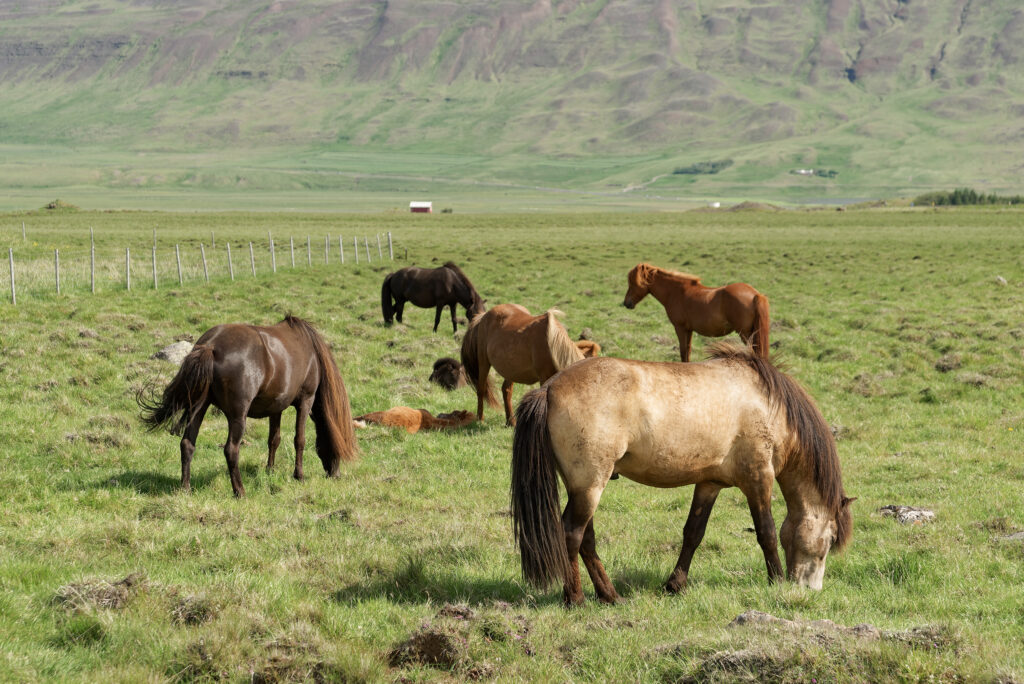
The story of the Icelandic horse begins over 1,100 years ago when Viking settlers first brought horses to the volcanic island between 874 and 930 CE. These hardy equines, likely ancestors of today’s Norwegian Fjord and other Germanic breeds, were selected for their ability to survive the treacherous sea journey across the North Atlantic. Once established in Iceland, these horses faced complete isolation for over a millennium, as the importation of horses was prohibited to prevent diseases – a ban that remains in effect today. This isolation created a genetic island where certain traits, including the unique gaits, were preserved and strengthened through centuries of selective breeding. The resulting breed is one of the purest in the world, with a genetic profile that has remained remarkably stable for hundreds of years.
Understanding the Five Gaits
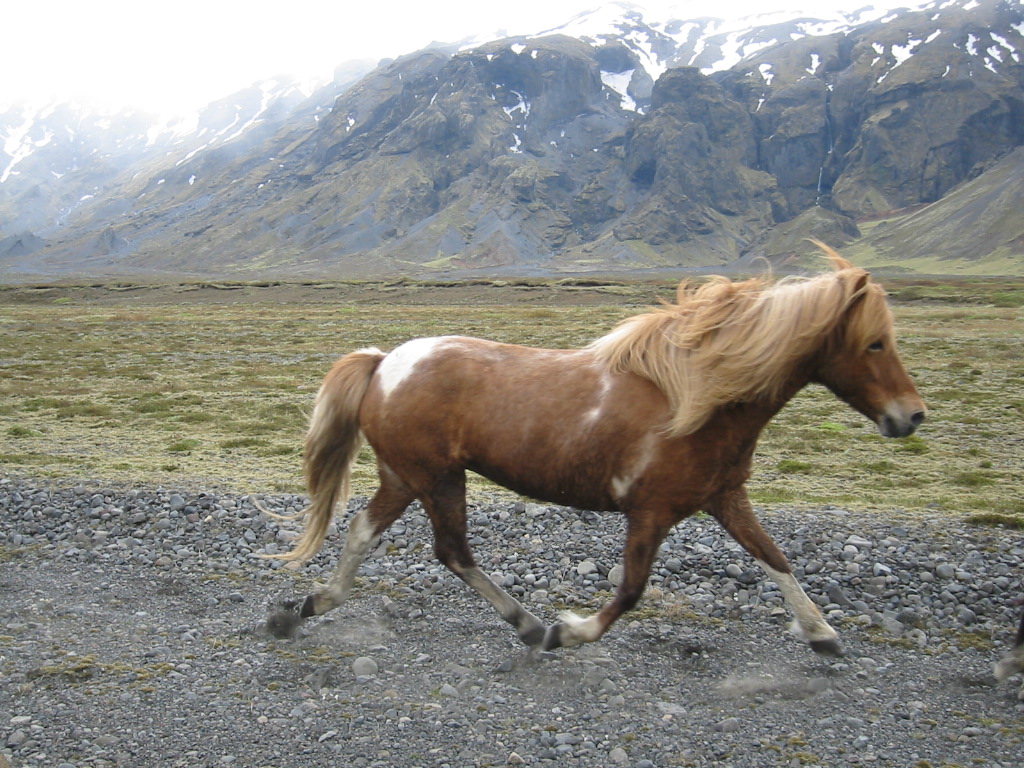
Unlike most horse breeds that typically perform three gaits – walk, trot, and canter/gallop – the Icelandic horse naturally offers five distinct movement patterns. The first three are common to all horses: the walk (a four-beat lateral gait), the trot (a two-beat diagonal gait), and the canter/gallop (a three-beat gait followed by a moment of suspension). However, what makes Icelandic horses truly special are their two additional gaits: the tölt and the flying pace. The tölt is a four-beat lateral gait similar to the walk, but significantly faster and without the typical up-and-down movement that makes trotting uncomfortable for riders. The flying pace, or skeið, is an extremely fast lateral two-beat gait where the horse moves both legs on the same side simultaneously, creating moments where all four hooves are off the ground – a movement that can reach speeds up to 30 mph (48 km/h).
The Genetics Behind the Gaits
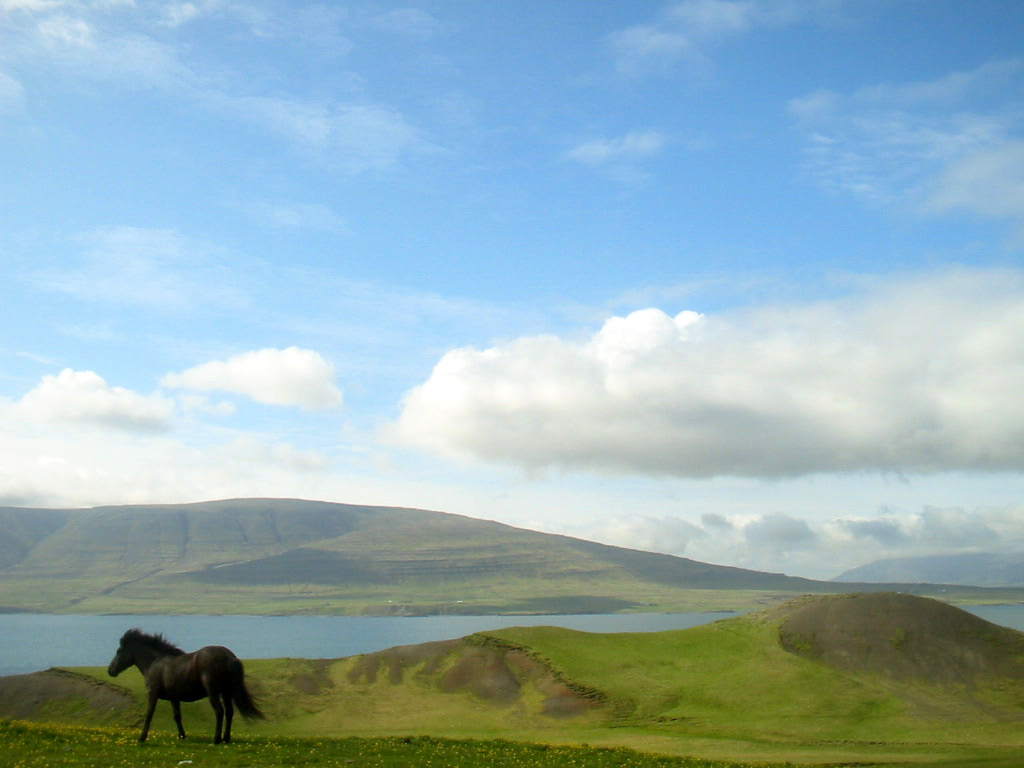
Modern genetic research has revealed that the Icelandic horse’s unique gaits stem from a specific genetic mutation. Scientists have identified the “gait-keeper” gene (DMRT3), which when mutated, allows horses to perform additional gaits beyond the standard three. This mutation affects the horse’s spinal cord and how it coordinates leg movements, essentially changing the central pattern generators in the spinal cord that control locomotion. In Icelandic horses, this mutation is particularly prevalent, with most purebreds carrying at least one copy of the mutated gene. Interestingly, while the mutation enables the possibility of additional gaits, training and selection over centuries have refined these movements into the specific, consistent gaits we see today. This genetic discovery has advanced our understanding of how other gaited horse breeds worldwide developed their distinctive movements.
The Tölt: A Rider’s Dream Gait
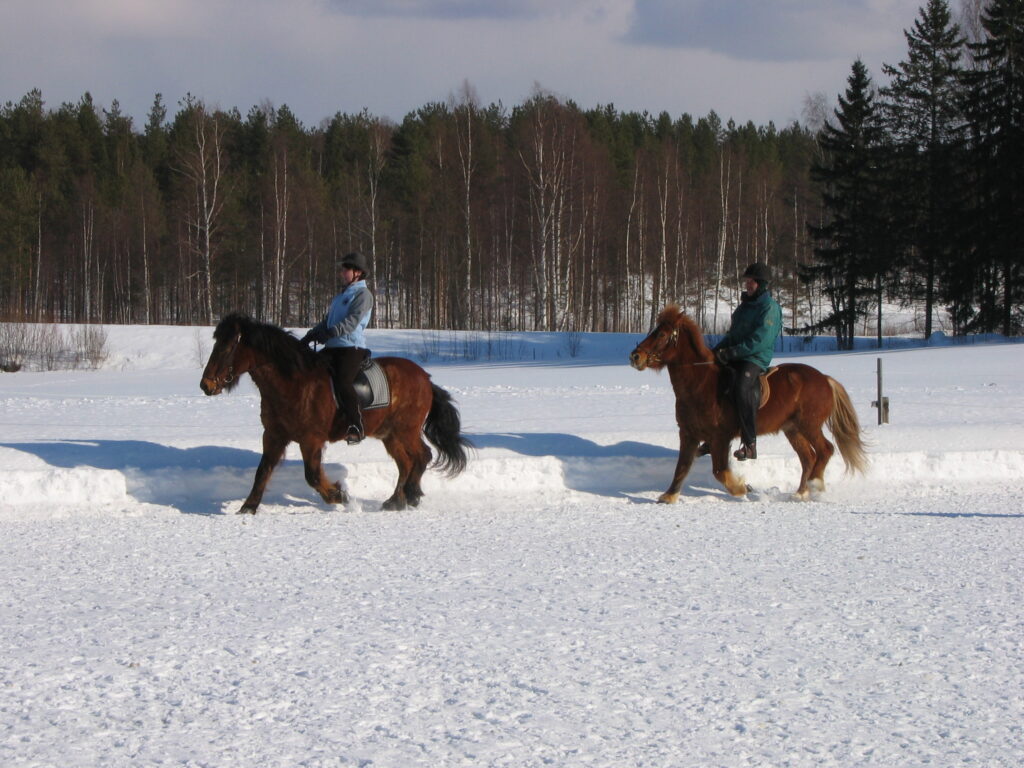
The tölt is perhaps the most celebrated gait of the Icelandic horse and is often described as “riding on air” by enthusiasts. This unique four-beat lateral gait offers remarkable smoothness because the horse always has at least one foot on the ground, eliminating the bouncing motion typically experienced in trotting horses. When a horse tölts, its back remains level and stable, transferring minimal movement to the rider – making it possible to sit comfortably even at speeds of 20 mph (32 km/h) or more. Historically, this smooth ride was invaluable for traversing Iceland’s rough terrain without exhausting either horse or rider. Today, the tölt is highly prized in competition and everyday riding, allowing riders to carry a full glass of water or beer without spilling a drop – a popular demonstration at Icelandic horse shows that illustrates the extraordinary smoothness of this gait.
The Flying Pace: Speed and Power
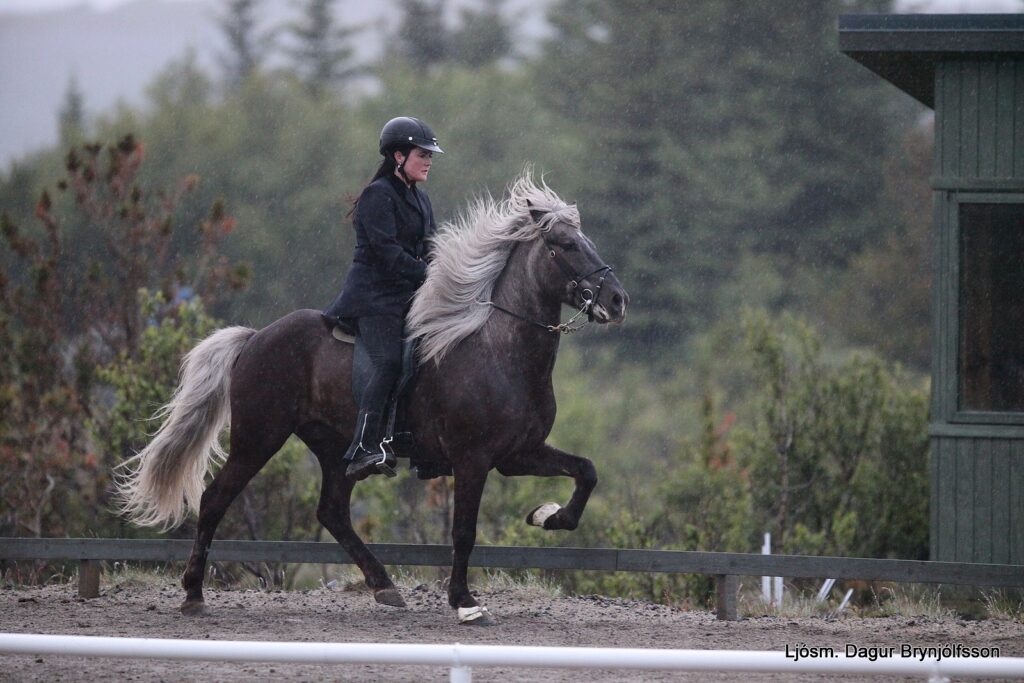
The flying pace (skeið) is the rarest and most difficult of the Icelandic horse’s gaits, with only about 30% of Icelandic horses able to perform it naturally. This high-speed lateral gait involves the horse moving both legs on the same side forward simultaneously, creating a distinctive moment of suspension where all four hooves are off the ground. The flying pace produces a sensation of surging forward in powerful bursts, reaching speeds of up to 30 mph (48 km/h). Historically, this gait was used for short-distance racing on flat terrain, as it cannot be maintained for long periods due to its demanding nature. While spectacular to watch and exhilarating to ride, the flying pace requires considerable skill from both horse and rider to execute properly. In Iceland, special pace racing tracks called “pace tracks” host competitions where horses are judged on their speed, style, and cleanliness of gait.
Adaptation to Iceland’s Challenging Landscape
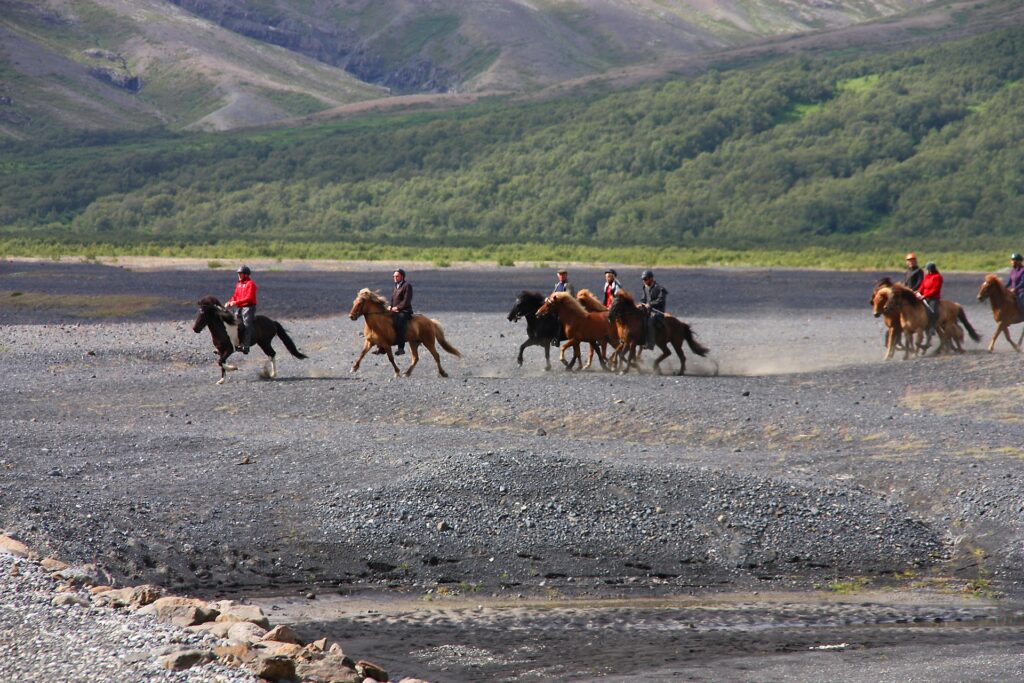
The development of these special gaits is deeply connected to Iceland’s unique and challenging terrain. The island’s landscape is characterized by rough lava fields, marshy areas, steep mountain slopes, and rivers – all demanding different types of movement for safe and efficient travel. The tölt, with its smooth four-beat rhythm, allowed riders to cover long distances over rough terrain without fatigue. The ability to shift between different gaits depending on the ground conditions gave both horse and rider versatility in traversing the varied Icelandic landscape. Over centuries, Icelanders selectively bred horses that could navigate these challenges most effectively, inadvertently strengthening the genetic traits for these specialized gaits. This natural selection process was complemented by cultural preferences, as horses that provided the most comfortable ride over difficult terrain were highly valued and chosen as breeding stock.
Historical Significance in Icelandic Culture
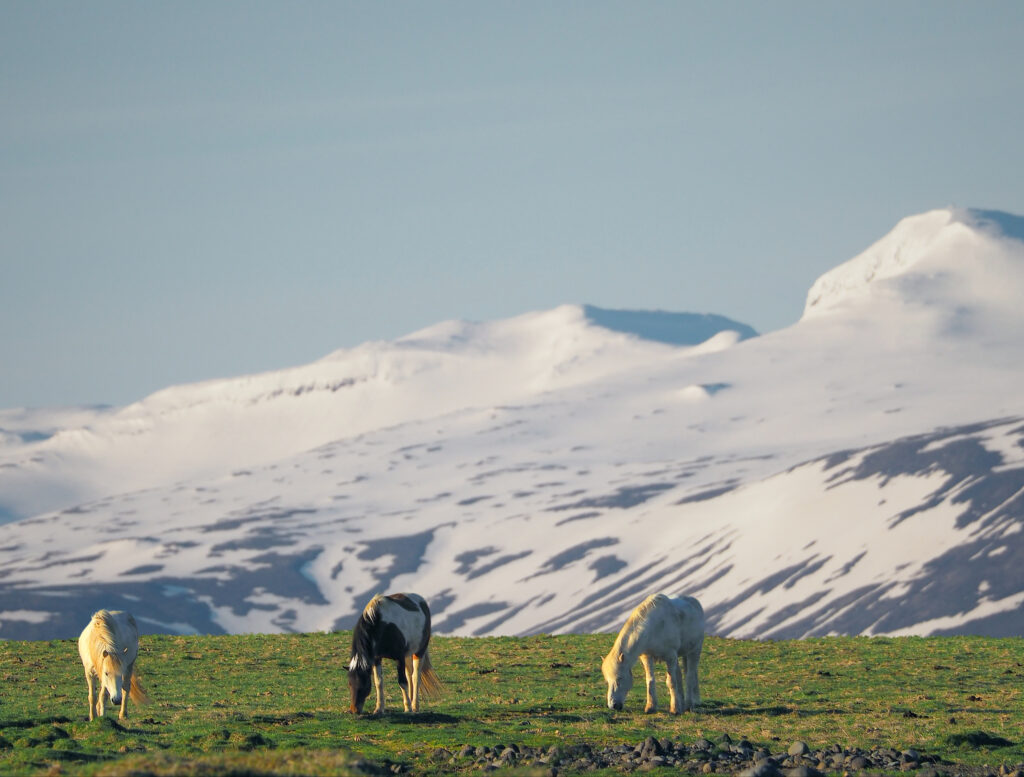
Horses have held profound cultural significance in Iceland since settlement times, featuring prominently in Icelandic sagas and folklore as symbols of wealth, power, and prestige. Before modern transportation, these uniquely gaited horses were the primary means of travel across the island’s challenging terrain, carrying people, goods, and mail between isolated settlements. The horses’ gaits became embedded in cultural practices, with pace racing emerging as a traditional sport that continues to this day. Norse mythology even connected horses to the gods, most notably with Odin’s eight-legged horse Sleipnir, whose mythological multi-legged gait might reflect the blur of legs seen during the tölt or flying pace. The deep cultural connection to these horses explains why Icelanders have maintained such strict breeding standards for over a millennium, preserving the purity of the breed and its distinctive gaits.
Selective Breeding Practices
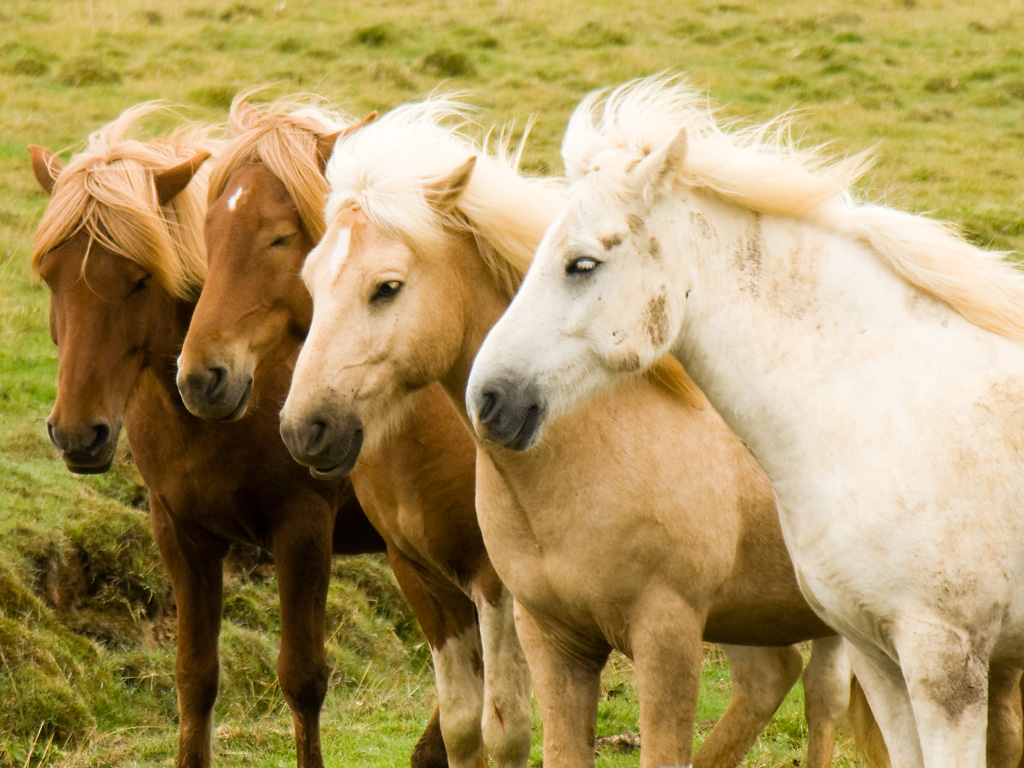
For over a thousand years, Icelandic horse breeders have carefully selected breeding stock to enhance and preserve the special gaits. Early Icelanders quickly recognized the value of smooth-gaited horses for traversing their rugged homeland and began selectively breeding horses that displayed superior movement qualities. This selection process intensified in the 20th century with the establishment of formal breeding standards that explicitly prioritized gait quality. Today, breeding evaluations assess horses on a point system that heavily weights gait performance, with separate scores for each of the five gaits. Horses with exceptional tölt and flying pace command premium prices and are highly sought after as breeding stock. This consistent selection pressure over centuries has fixed the genetic traits for these gaits in the population, creating a breed where nearly all individuals can perform at least four gaits naturally.
The Role of Isolation in Preserving the Gaits
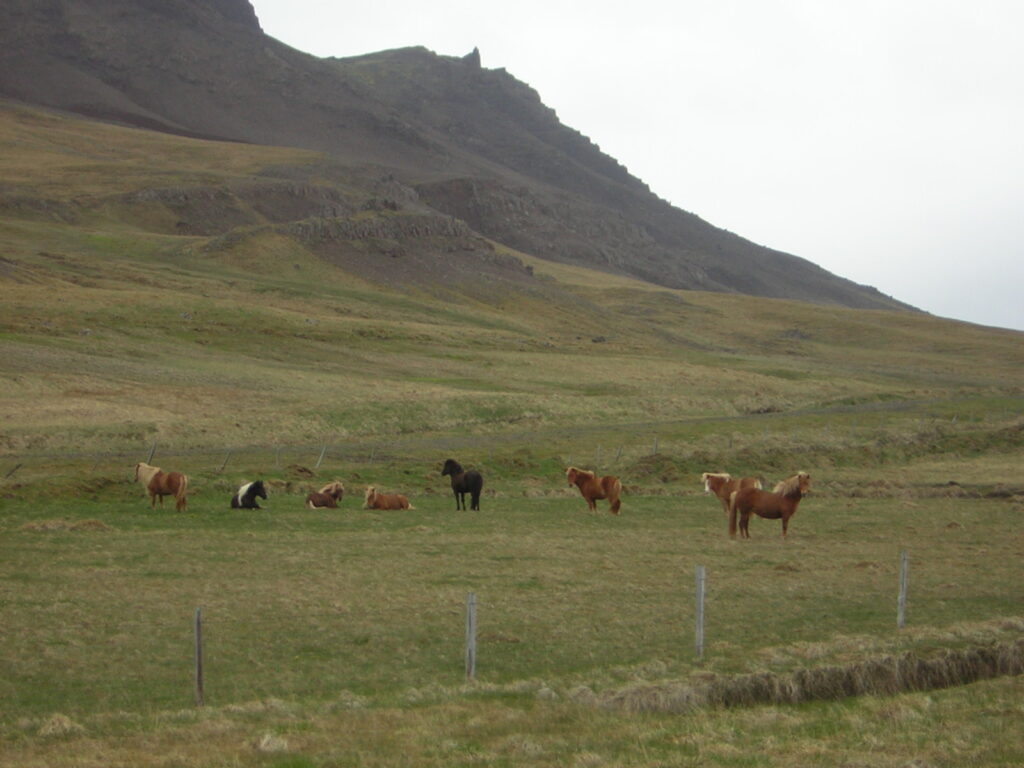
Iceland’s strict ban on horse importation has played a crucial role in preserving the unique gaits of the Icelandic horse. Established in 982 CE and still enforced today, this ban prevents any horses from entering the country, creating what is essentially a closed genetic pool. Even Icelandic horses taken abroad can never return to their homeland, ensuring that outside genetic influence doesn’t dilute the carefully maintained characteristics of the breed. This isolation has protected the breed from diseases common in mainland Europe and preserved the genetic makeup that enables the tölt and flying pace. Without this isolation, crossbreeding might have diluted or eliminated the gait-producing genes over time, as happened with many other ancient gaited horse types throughout Europe. The remarkable consistency of the Icelandic horse’s appearance and abilities over a millennium stands as testament to the power of this genetic isolation.
Training Versus Nature: Developing the Gaits
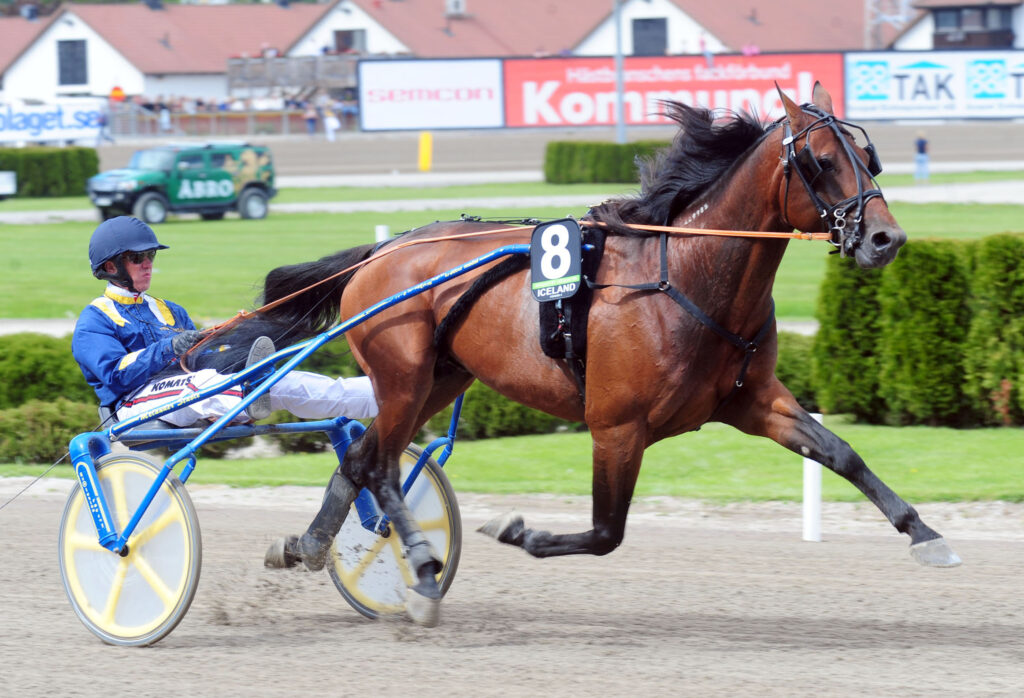
While the ability to perform these special gaits is genetically determined, proper training is essential to develop them to their full potential. Young Icelandic horses naturally display these gaits from an early age, often shifting spontaneously between them while playing in pastures. However, skilled trainers must carefully nurture these natural talents to create clean, consistent movements suitable for riding and competition. The training process typically begins around age four, when the horse’s physical development is sufficient to support a rider. Traditional training methods emphasize patience and gradual development, allowing the horse to find its natural balance in each gait before refining the movements. Some horses naturally favor certain gaits over others, with trainers working to their individual strengths rather than forcing all horses into the same pattern. This balance between genetic predisposition and careful training ensures that each horse’s natural gait abilities are optimally expressed.
Modern Competition and Worldwide Recognition
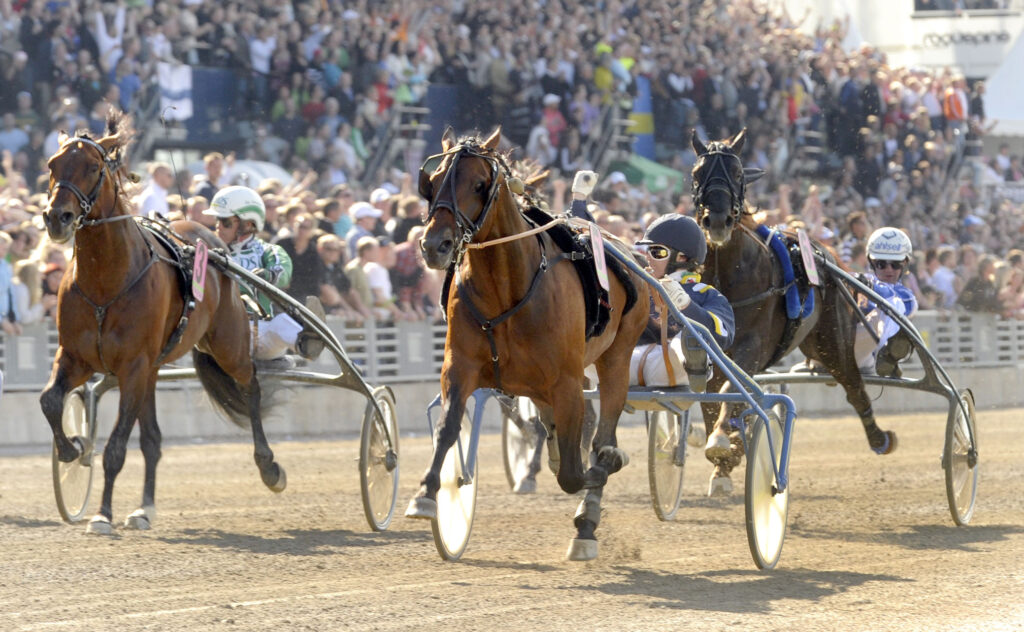
Today, the unique gaits of Icelandic horses are celebrated in specialized competitions both in Iceland and internationally. The World Championships for Icelandic Horses, held every two years, draws competitors and spectators from around the globe to witness these extraordinary gaits in action. Competition categories include specific tests for tölt and flying pace, with judges scoring horses on the cleanliness, speed, and expression of their movements. Beyond formal competition, demonstrations of the beer tölt – where riders carry full glasses of beer while tölting without spilling a drop – have become famous worldwide as proof of this gait’s exceptional smoothness. The global Icelandic horse community now spans over 20 countries, with breed associations dedicated to preserving these special gaits through careful breeding programs. This international recognition has transformed what was once a practical adaptation for Iceland’s terrain into a celebrated equestrian specialty with dedicated enthusiasts worldwide.
Physical Attributes Supporting the Gaits
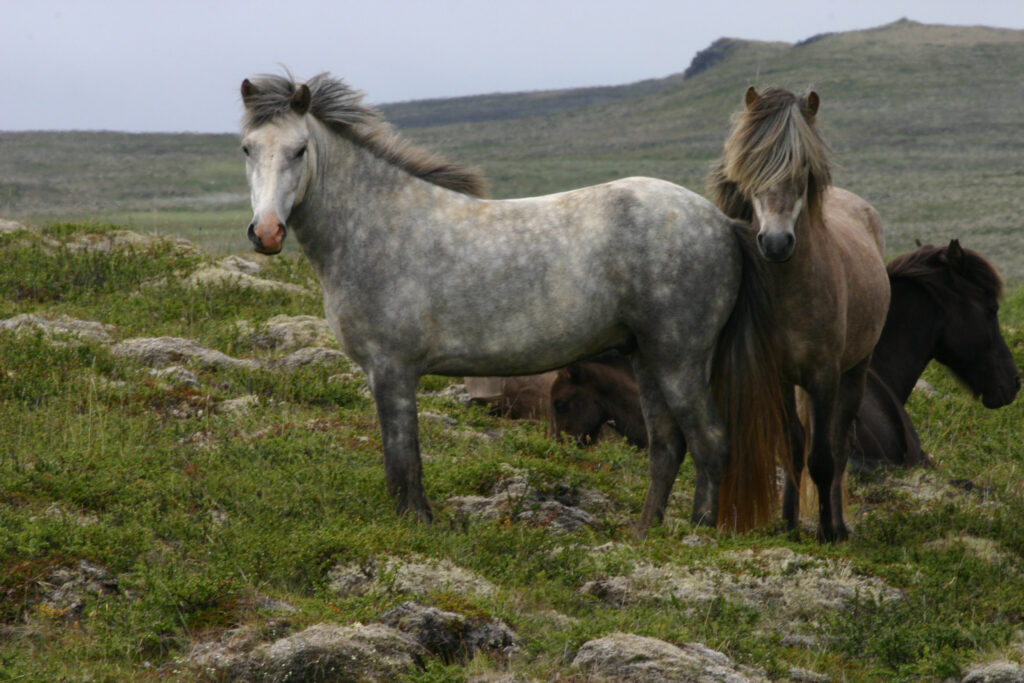
The Icelandic horse’s physical structure perfectly supports its unique gaiting abilities. Standing between 13 and 14 hands high (52-56 inches at the shoulder), these horses are technically pony-sized but possess proportions and strength that classify them as horses. Their compact, muscular bodies feature strong backs, powerful hindquarters, and often a slightly uphill build that facilitates balance during complex gaits. The angles of their shoulders, hips, and hocks are ideally suited for the extended leg movements required for the tölt and flying pace. Additionally, their relatively short legs contribute to stability, while their strong bone structure supports the rapid and often complex leg movements of their special gaits. These physical characteristics have co-evolved with their gaiting ability through centuries of natural selection and breeding, creating a horse whose form perfectly matches its remarkable function.
Future Preservation of Iceland’s Gaited Heritage
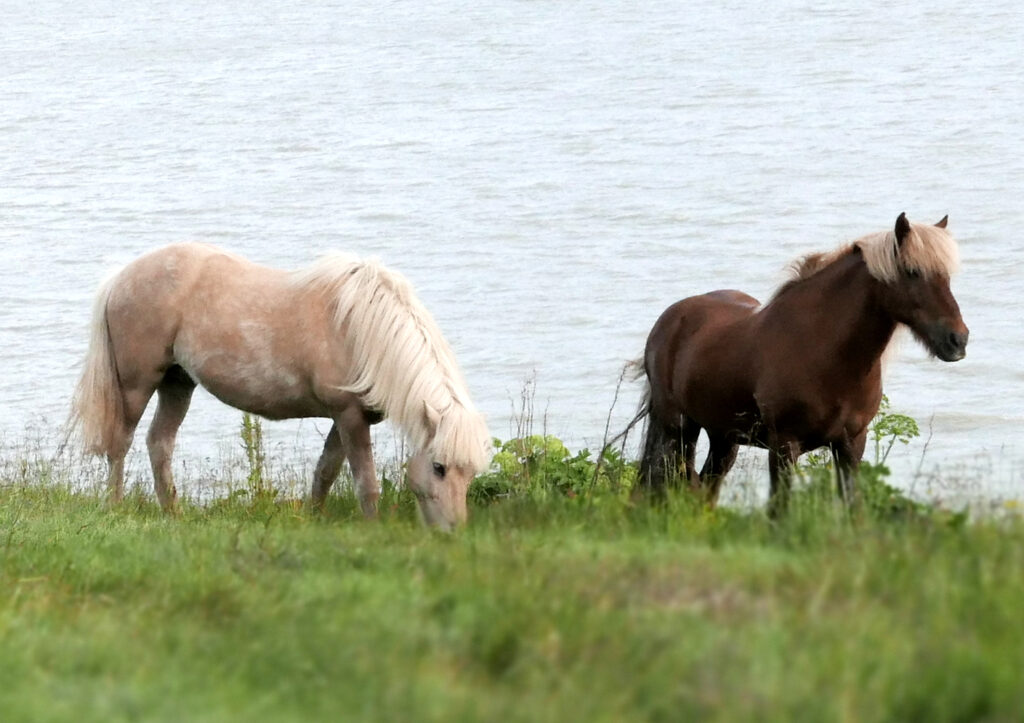
As we look to the future, preserving the Icelandic horse’s unique gaits faces both challenges and opportunities. The breed’s growing international popularity has increased breeding outside Iceland, where different selection pressures might eventually alter traditional gait characteristics. To counter this, the International Federation of Icelandic Horse Associations (FEIF) maintains strict breeding standards across 22 member countries, ensuring consistency in evaluation and selection. Modern genetic testing now allows breeders to identify horses carrying the gait-keeper gene, potentially strengthening breeding programs aimed at preserving these movements. Meanwhile, researchers continue studying the biomechanics and genetics of these gaits, deepening our understanding of their unique properties. Through careful stewardship and international cooperation, the remarkable gaited heritage of Icelandic horses—a living connection to Viking-age horsemanship—should continue to thrive for generations to come.
Conclusion
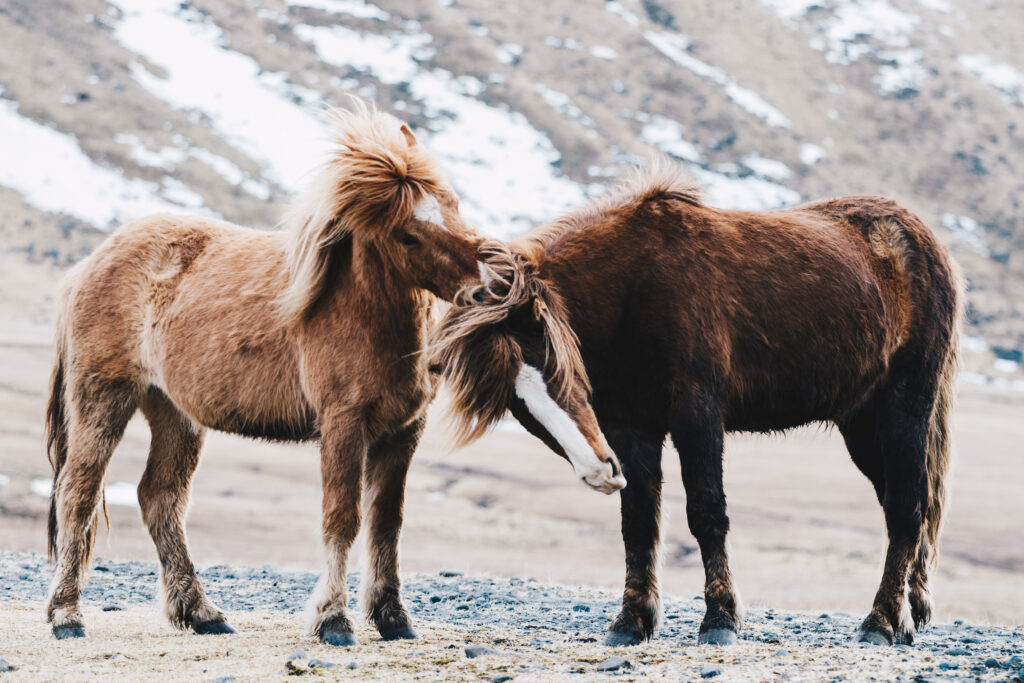
The unique gaits of Icelandic horses represent a fascinating intersection of genetic mutation, environmental adaptation, cultural preference, and careful breeding. Developed over a millennium of isolation on a volcanic island, these extraordinary movements have transformed from practical adaptations for traversing rough terrain into celebrated equestrian arts. The tölt and flying pace stand as living examples of how humans and animals can co-evolve specialized capabilities over generations. As these special horses continue to captivate riders and researchers worldwide, their distinctive way of moving across the earth reminds us of the remarkable diversity that can develop when geography, genetics, and human selection intertwine over centuries to create something truly exceptional.

